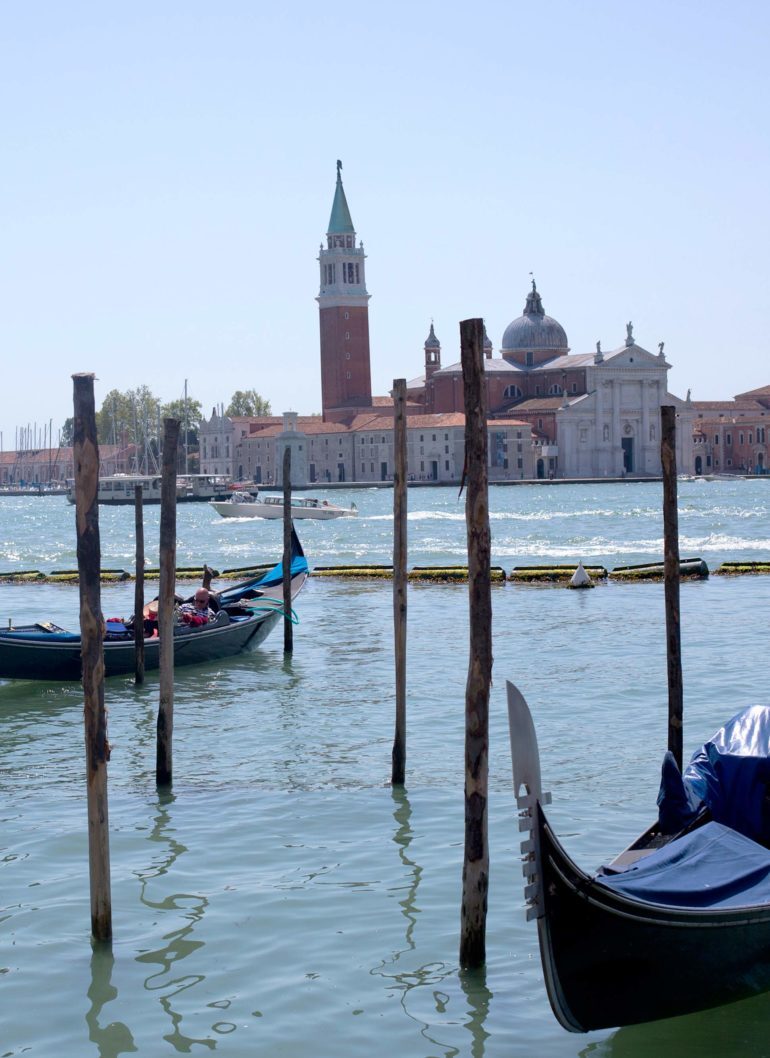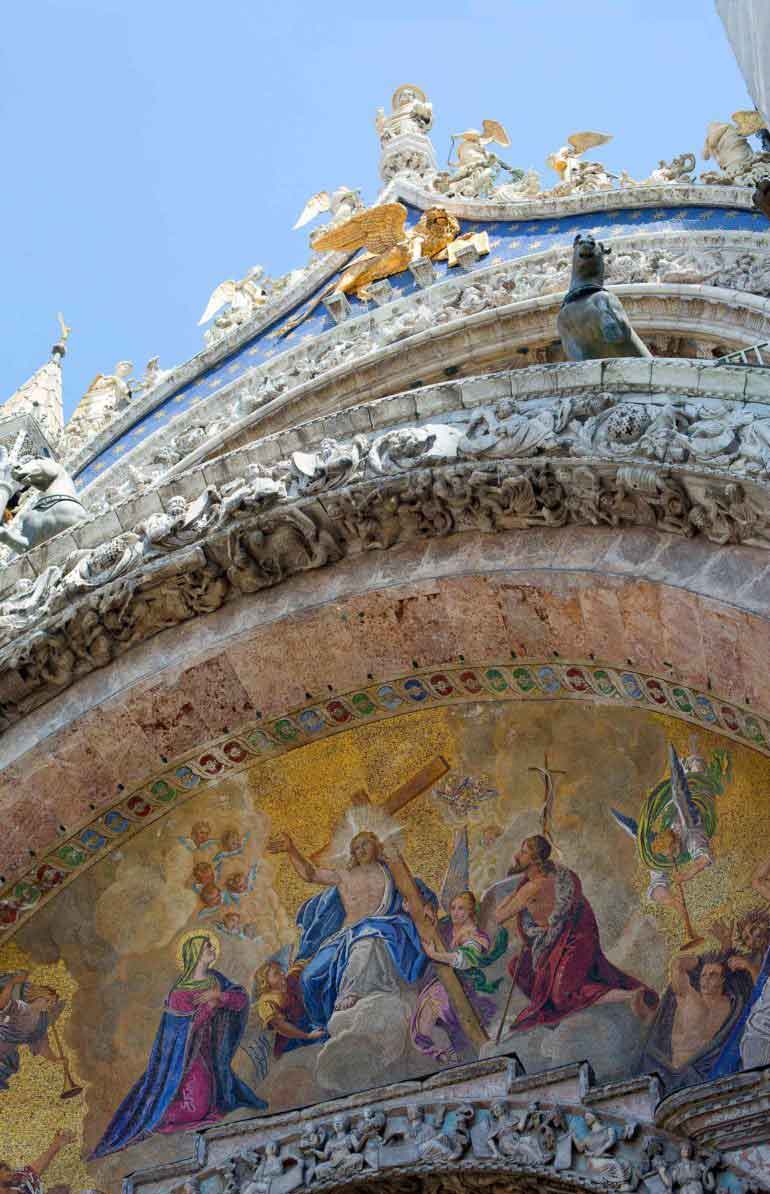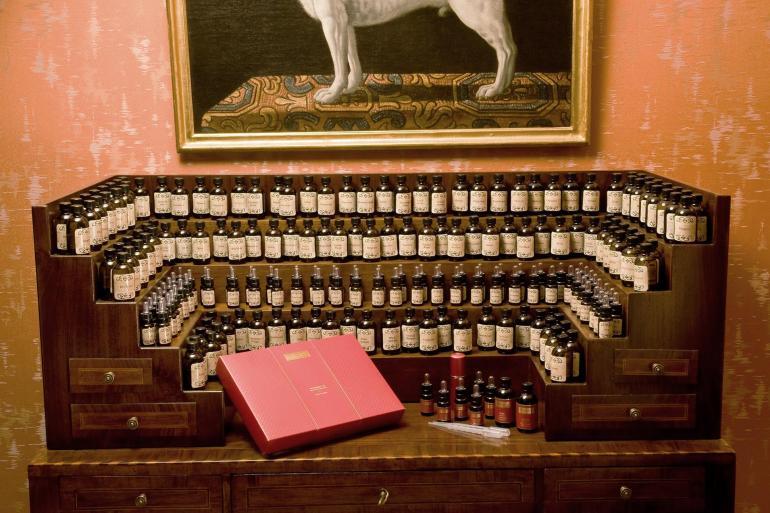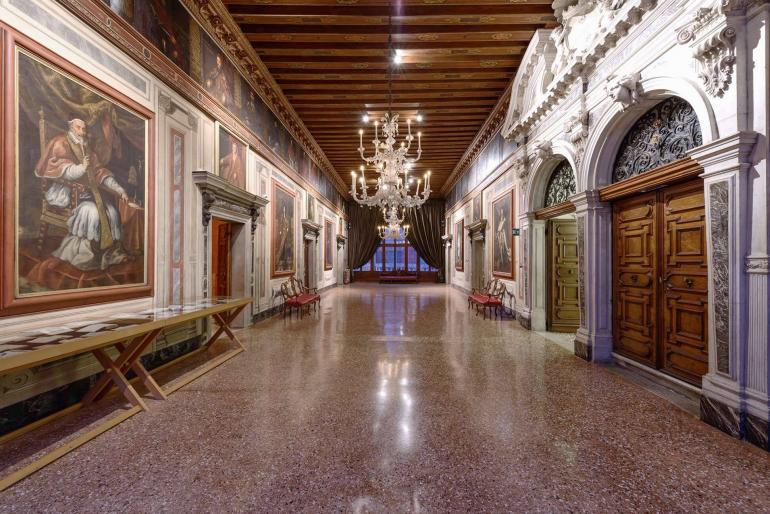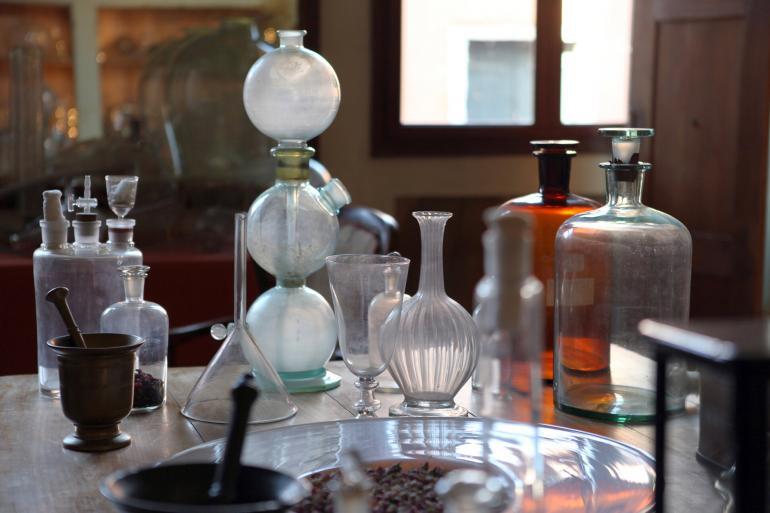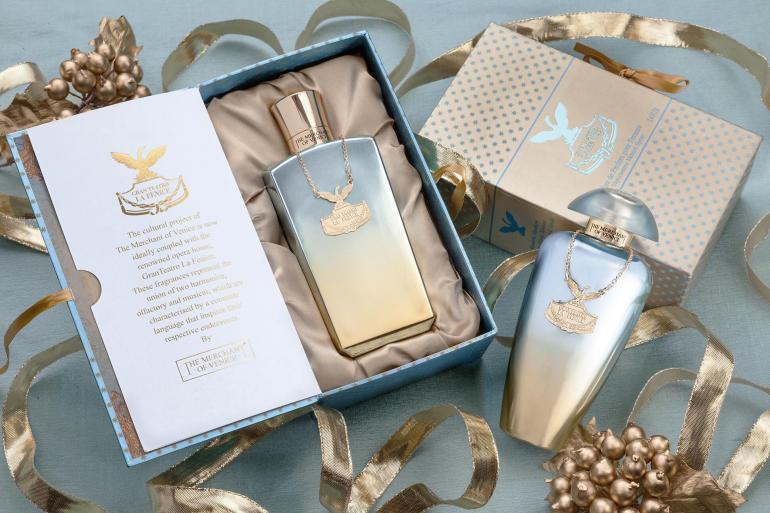On maps, I trace the ‘mude’ (the maritime trade routes to Venice) that brought spices, silks, textiles, gems, gold and fragrance essences from Greece, Constantinople, Persia, Arabia and beyond. I sniff civet, musk, ambergris and other old animal essences – now banned from perfumes and replaced by synthetic alternatives – from large apothecary jars. I watch videos that explain the background and process of perfume-making, alongside displays of instruments used for enfleurage and distillation, arcane as the alchemist’s art. I explore the perfume families (citrus, floral, oriental, fougère, woody and chypre) as part of the sensory experience. Feeling heady from so much exotic sniffery, I turn my attention to the interactive displays. Alongside such 21st-century adjuncts, I find 4,000 years of perfume bottles from the Storp Collection on temporary display, their development offering a parallel narrative to that of perfume. Nearby, a 1672 reprint of the first recipe book for cosmetics, Secreti Nobilissimi dell’Arte Profumatoria (originally published in 1555), holds all the secrets of the perfumer’s art – from cosmetics and medicine to science and magic. Not for nothing did the plague doctor sniff fragrant pomanders of cloves, cinnamon and spices, thought to ward off the disease, as he prodded victims with his pointed stick, to see if they were still alive. That insalutary period is remembered at the Carnival of Venice, in the long-nosed, bespectacled mask of the doctor, hand-made by Ca’ Macana in Dorsoduro in defiance of cheap Chinese copies – with pressed, painted and decorated papier mâché, as tradition dictates.
Yes, artisanal connections with perfume can be found everywhere. And The Merchant of Venice, which launched in 2014, was as Vidal modestly terms it, a ‘by-product’ of the Perfume Museum. Ask him what sets the brand apart from the competition, and his answer is unhesitating. “Culture!” he says. “It’s about promoting ancient arts and traditions. There’s the museum, we published books…”
Not to mention the flagship store, in San Fantin. Walking into the 1650s pharmacy, I imagine myself in a ‘muschiere’ perfume workshop, of which some thirty flourished around San Marco and Rialto by the 18th century. Wood-panelled, with four giant terracotta angels representing Botany, Medicine, Surgery and Physics, and surrounded by allegorical figures, this beautiful locale was redesigned in neo-gothic style in 1846 by Giambattista Meduna – the man responsible, ten years earlier, for the neighbouring La Fenice opera house. The historical link continues. Take the Murano Collection: each of the seven perfumes in this range is based on a different mude – such as Byzantium Saffron, from Constantinople. The very names – from the masculine Sultan Leather or Ottoman Amber; to the feminine Rosa Moceniga and Asian Inspirations – evoke the source of their exotic ingredients. All are displayed in exquisite bottles reminiscent of the glasswork of Murano, creating a link with another grand tradition of Venice, first mentioned in 982.
“We can’t put perfume into genuine, handmade Murano glass, because bottles have to be standardised. And the natural pigments used to colour the glass can have an adverse reaction with the perfume,” explains Vidal. The ultra-exclusive collection of Murano vases designed by Nason Moretti, however, has found a way around the problem – for a price – with the insertion of a clear glass ‘flame’ isolating 30ml of concentrated Eau de Parfum within these vividly pigmented creations. I come away with a bottle of my favourite – Liberty – from the Murano Exclusive Collection. It’s a darkly sensuous blend of amber, patchouli, saffron and more; the magical concoction of a latter-day alchemist.
Meanwhile, back in the perfumed gardens of San Clemente – a former monastery-turned-lunatic-asylum to which, by the way, Mussolini committed his first wife – Vidal is waxing lyrical about his next fragrance, soon to launch: Blue Tea. Made with the Asian Blue Pea flower (otherwise intriguingly known as clitoria ternatea) it is, he says, “one of the most exclusive ingredients, never before used in the world of perfumery.”
For that, I shall have to wait. In the meantime, I’m going for gold at the spa of the Kempinski for the wrinkle-plumping, bag-reducing, spot-zapping, skin-brightening benefits of my Gold Mask – benefits well-known to the beauties of antiquity. After all, it worked for Cleopatra. Perhaps it will work for me…
Find out more about the rooms of the Palazzo Mocenigo dedicated to perfume at www.mocenigo.visitmuve.it.
The 24-carat gold mask anti-ageing and brightening face treatment was courtesy of The Merchant of Venice Spa, San Clemente Palace Kempinski Venice.
Teresa’s journey to and from Venice was made easy by www.venicequalitytransfers.com.
Get out there
Do…
… visit the San Fantin branch of The Merchant of Venice for a lesson on structuring perfume, using up to three base notes, and several facets; then leave with a do-it-yourself kit and manual – a fun and unique gift.
… have lunch at the Michelin-starred Venissa restaurant, overlooking the eponymous vineyard in Mazzorbo. They are the only commercial producers of Dorona wine, from a historic grape variety, which was once the tipple of Doges. The bottles are adorned with 24-carat gold labels, from Mario Berta Battiloro.
Don’t…
… get into any private water vehicle (taxi, gondola) without first establishing the pirce – sadly, this is an unpleasant side-effect of Venice’s over-tourism.
… go anywhere near San Marco or Rialto when there is a cruise ship in town. It is not a pleasurable experience for anybody.
… be fooled by Chinese copies masquerading as Murano glass. Look for a punt mark on the base, a signature, or variations in colour as marks of authenticity. Each piece should be unique, with slight irregularities.


